7 Surprising Things about Pompeii most people don’t know about
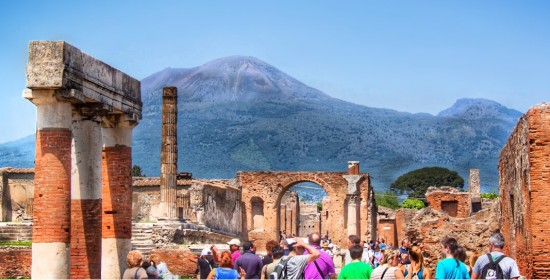
Buongiorno and welcome to Stefano Rome Tours! Rome’s leading tour company for private Italy tours and shore excursions.
Each year we take hundreds of travelers to Pompeii on our fun-filled Amalfi Coast Tour from Rome to Pompeii, Sorrento, and Positano. Pompeii is among the most famous archaeological sites in the world with some 2.5 million tourists visiting each year.
In this travel blog, we share with you 7 surprising things about Pompeii that most people don’t know about (unless you book a private guided tour of Pompeii).
7 Surprising Things about Pompeii
most people don’t know about
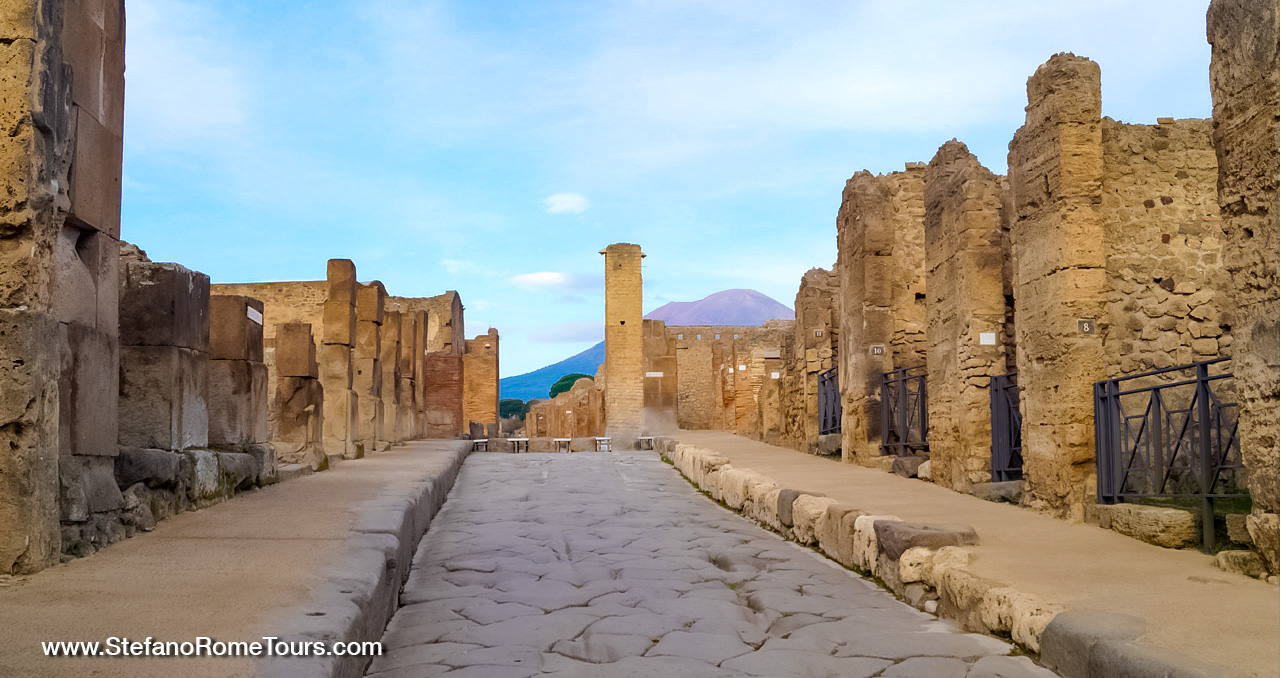
1. What does “Pompeii” mean & how did it get its name?
Before Pompeii was a Roman city, it was settled by the Etruscans and the Greeks, but it was first settled by the Oscans, descendants of the Neolithic settlers in the region of Campania, who founded five villages in the area. The name "Pompeii” appears to have its root in the Oscan word “Pompei” which meant “Five” for the five villages they founded.
Another hypothesis is that Pompeii may have borrowed its name from the 2nd century BC plebeian family of Ancient Rome the “gens Pompeia”, however, it’s also a possibility that the family name derived from the word “Pompa” which was a procession. The hypothesis leaves a lot of uncertainties surrounding the origin of Pompeii’s name, but we hope that archaeology will one day solve this mystery.
2. Pompeii is the world's largest archaeological site
Pompeii covers an area of 145 acres and has been described as the most complete urban excavation ever undertaken.
Not only is Pompeii the largest archaeological site in the world but the longest continuously excavated site. Initial excavations began in 1748 at the behest of King Charles III of Spain, and excavations have never ceased.
Even today, new discoveries are made that gift us new information about Pompeii and its citizens before they were instantly entombed by Mount Vesuvius’ catastrophic eruption. While new excavations are still undergoing, the focus has now shifted to preserving the ruins already uncovered.
3. The citizens of Pompeii had near-perfect teeth
CT scans and 3D models of skeletons in Pompeii showed that, unlike other Romans, Pompeiians had nearly perfect teeth. This could have been attributed to their healthy diet and the high fluoride content found in the area.
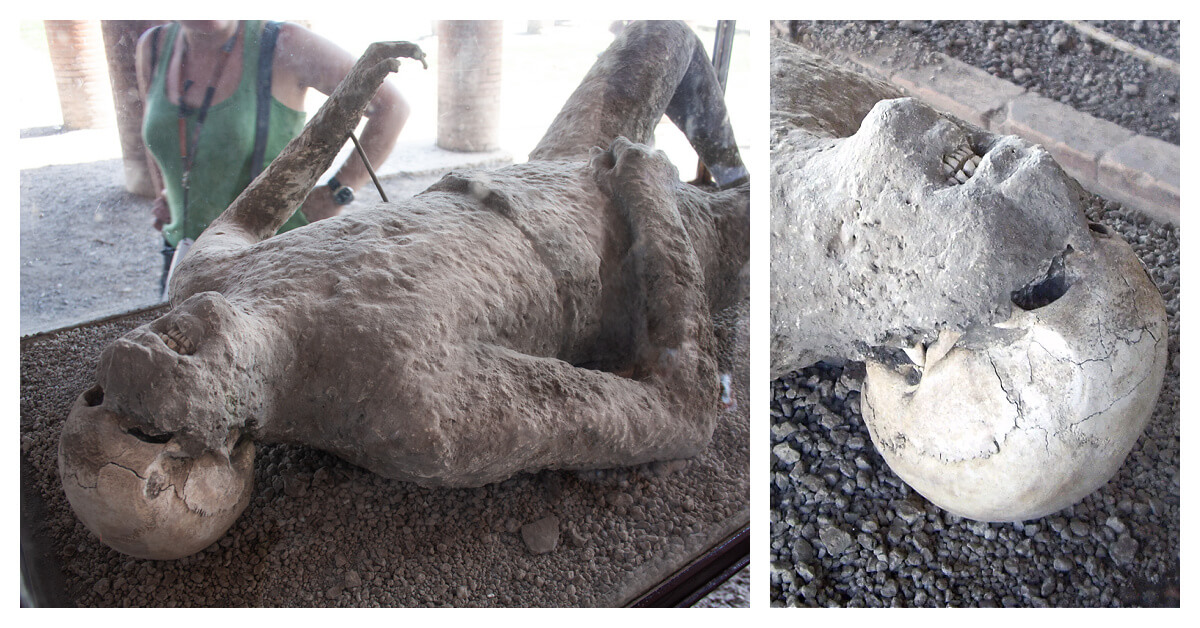
Volcanic activity is a natural source of fluoride, and the local water supply would have contained fluoride from Mount Vesuvius.
4. Pompeii had fast food restaurants called Thermapolia
Just like modern-day Romans in Italy, ancient Pompeiians also went out to eat, and archaeology shows us where they enjoyed eating out.
If you’re wondering WHY the ancient Romans go out to eat?
The wealthy preferred to eat at home in their affluent villas staffed with servants and slaves preparing sumptuous meals in their kitchens, but the poor didn’t enjoy that luxury in their homes as many lived in stacked apartment buildings (insulae) where the risk of fire from cooking indoors deterred them from cooking at home.
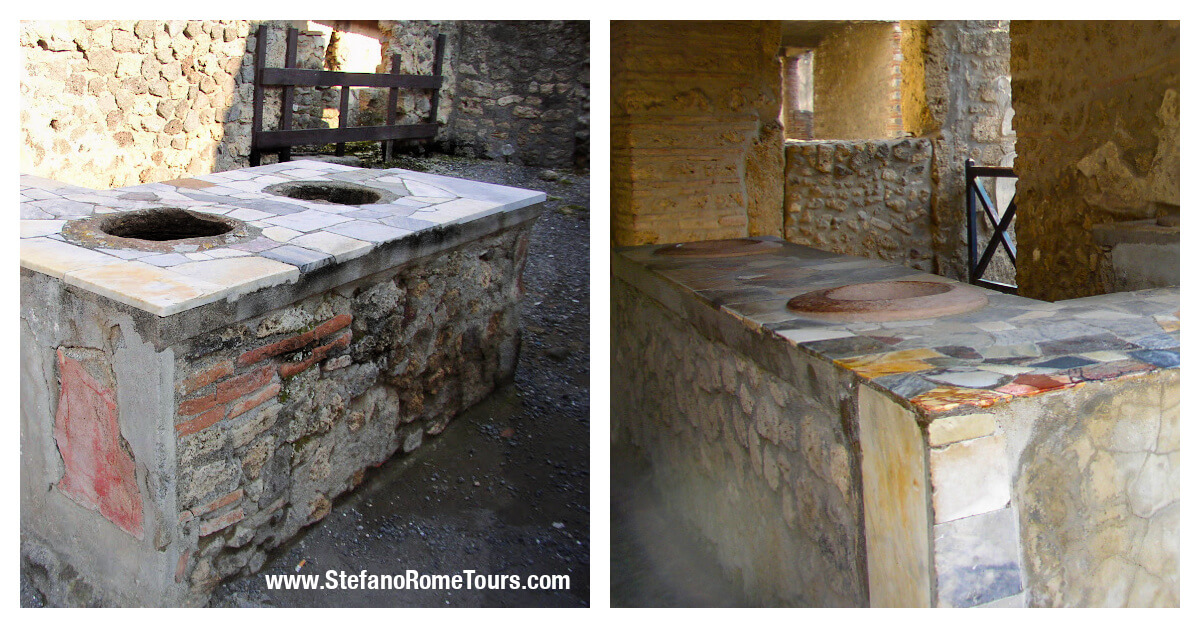
Instead, the populace relied on eating out mainly at lunch, frequenting fast food joints known as Thermopolia. Such eateries provided quick food and drink to their patrons, made evident by the discovery of utensils and crockery in the shop’s vicinity.
Menus were usually frescoed images on a wall that showed the type of food items the thermopolium served. This method was useful for the many foreigners who traveled through Pompeii as merchants or traders and didn’t speak the local language.
A stone counter usually opened out onto the street and contained round openings with hollow spaces inside where the food was cooked in large terracotta containers and then served to the customers. It is estimated that about 80 such thermapolia existed providing quick meals and snacks to the public.
In late 2020 archaeologists discovered an impressively well-reserved thermopolium adorned with vibrant frescoes of life scenes as well as various animals, including duck and fowl, that were cooked at the thermopolium. Remains of beef, pork, fish, and snails were uncovered in containers suggesting Pompeiians consumed a variety of dishes prepared with animal products. Also found inside the shop were nine amphorae, a bronze drinking bowl, two flasks, and an array of terracotta jars.
5. Graffiti in Pompeii were the ancient
“social media posts”
Over 11,000 graffiti samples have been uncovered in Pompeii with archaeologists studying and recording graffiti since the 1800s.
Many of these recorded graffiti were found in public areas such as stairwells and entrances and revealed little stories about the local characters in town. Most of the inscriptions were of friendly and love anecdotes, but also messages of anger, obscenities, and rivalry. Announcements, quotes from famous literary works, drawings, prices, critiques, and political messages were also inscribed onto the walls.
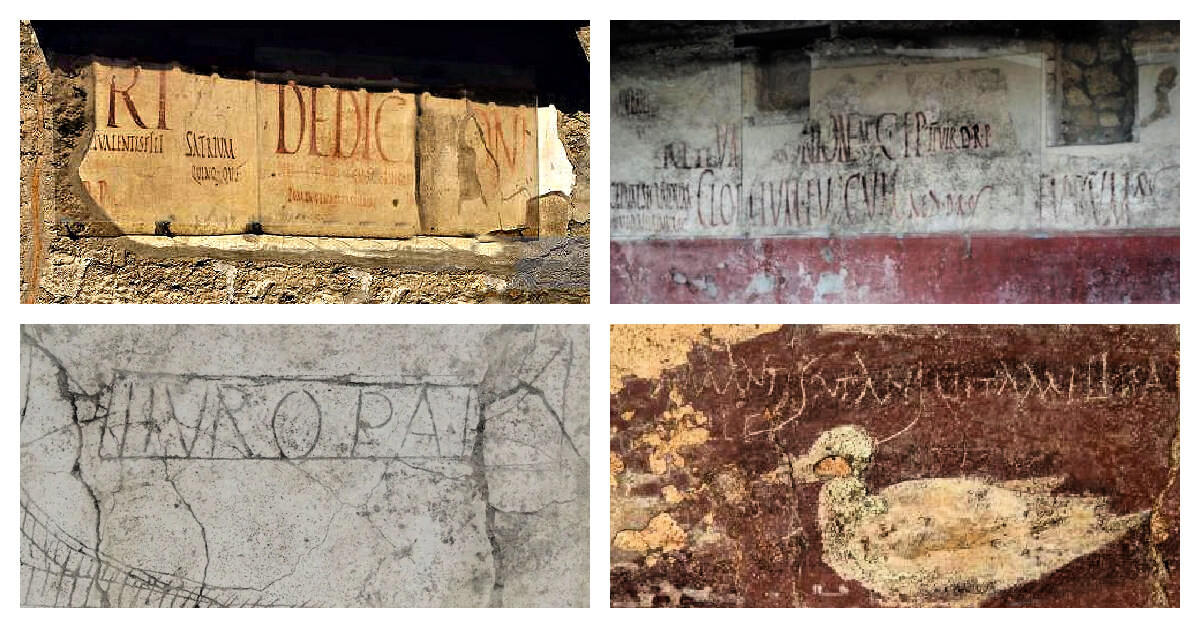
The walls of Pompeii seem to have been used for daily interactions, and reveal little stories about neighborhood characters, how people communicated publicly about private matters and general life in a 1st century AD Roman town.
Some graffiti seem much like modern-day “online reviews” with this inscription on the House of Cuspius Pansa: "The finances officer of the emperor Nero says this food is poison".
The oldest known graffiti in Pompeii dated to October 7, 78 BC with this classic inscription: Gaius Pumidius Diphilus was here”.
Modern social media users can relate to these characters, Successus and Severus, having it out on public wall graffiti. Apparently, Successus fancied a barmaid named Iris but it was unrequited love. A rival wrote in the first of the graffiti messages: "Farewell”
Successus couldn't allow this insult to stay without an insulting message of his own: “You’re jealous, don’t try to muscle in on someone who’s better-looking and is a wicked and charming man.”
His rival ended up having the last word in this series of graffiti messages: ”I have written and spoken. You love Iris, who doesn’t care for you. Severus to Successus.”
If election posts are annoying today, imagine in Ancient Pompeii! Over 2,800 examples of “election graffiti” was painted or carved on the walls around Pompeii.
“I ask you to elect Claudius Versus duumvir with judicial power, an honest young man”
“The little thieves ask for Vatia as aedile”
Other messages are a bit more unusual, such as this inscription on the wall of the latrine,“I am Apollinaris. I am the doctor of the Emperor Titus. I have defecated very well here. It was on the wall of the latrine.”
When you visit Pompeii, keep an eye out and perhaps you might discover ancient graffiti engraved on walls.
6. Locals did not know Vesuvius was a volcano
The ancient locals who lived in towns and communities surrounding Vesuvius were not aware of something called a “volcano” and they considered it a normal mountain because Vesuvius hadn’t erupted for 1,800 years. They did not have a word for a volcano, although later the word volcano was created from “Vulcan”, the ancient Roman god of fire.
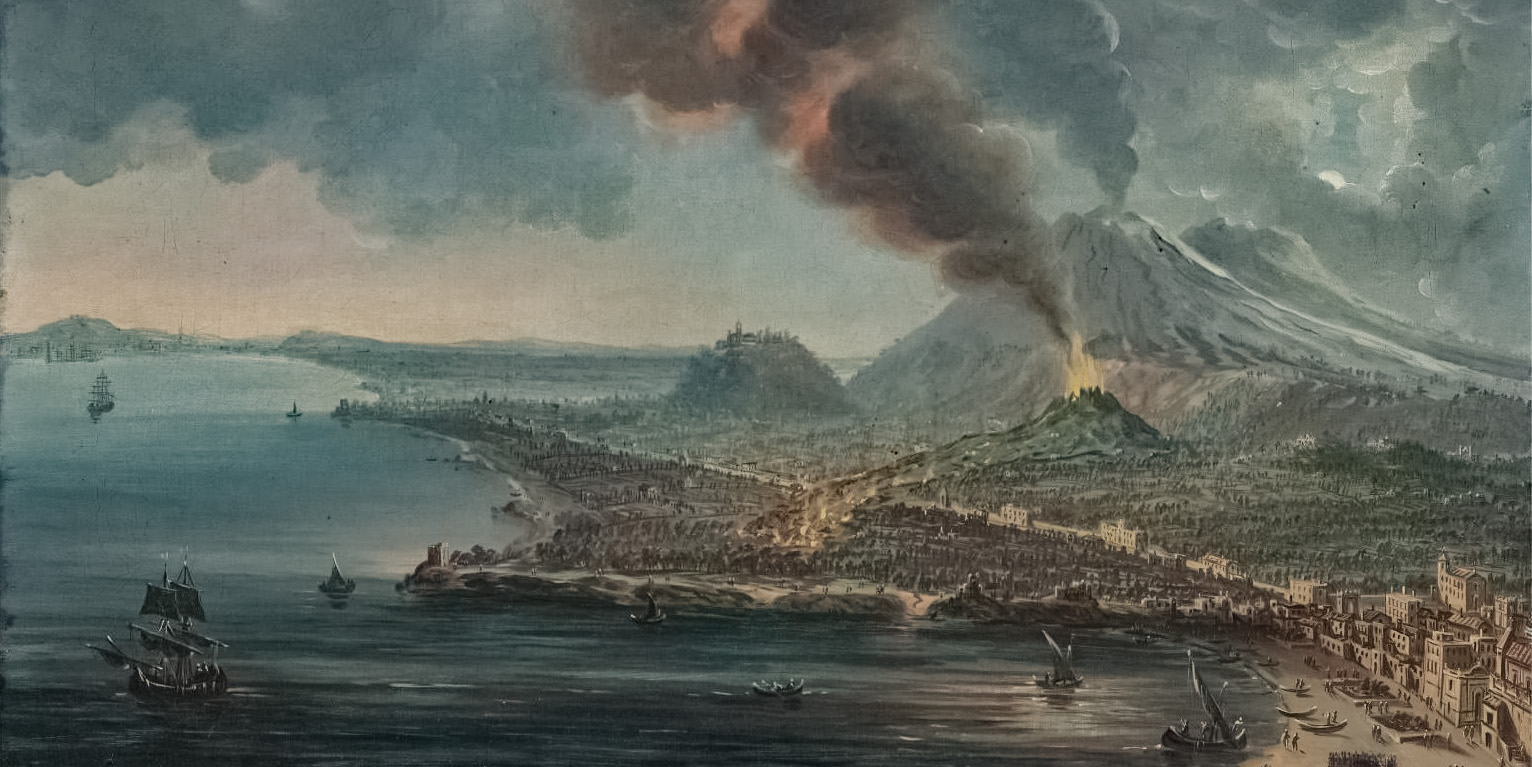
Due to this lack of knowledge about the effects of a volcanic eruption, the locals were unaware it could reach their city and engulf it. Not knowing what to do, they waited, and they eventually died.
7. Vesuvius Allegedly Erupted a Day After A Festival honoring Vulcan, the Roman God Of Fire
Whether pure irony, an unfortunate coincidence, or perhaps a mere presupposition, the eruption of Mount Vesuvius is said to have occurred the day after the Vulcanalia, a Roman holiday honoring Vulcan, the pagan god of fire, metalworking, forges, and volcanoes.
For the Romans, there were two types of fire: constructive such as the fire used for cooking and metalworking, and destructive such as the fire that destroys crops, granaries, and homes.
Vulcanalia was an annual festival held on August 24 which was considered the hottest day of the year when everything was dry and at risk of burning, and the festival was a plea to their god to prevent this from happening. Vulcanalia was celebrated with large bonfires into which sacrificial animals and fish were fed to appease the fire god and give the citizens the illusion of control over the powers of fire.
One might imagine the shock and horror the people felt when Vesuvius erupted soon after, raining ash and fire upon their city, which could have been interpreted as a sign of the god’s wrath in the form of a volcanic eruption.
8. The actual exact date of the Vesuvius eruption
is uncertain
Due to letters written by Pliny the Younger, it has been traditionally believed Mount Vesuvius erupted on August 24-25, 79 AD.
Modern hypothesis places the eruption of Mount Vesuvius in October or November of the same year. Why?
Scholars argued that heavy clothing worn by some of the citizens is still visible in plaster casts, although one could argue the heavy clothing could have been worn as protection from the falling ash and pumice. Also, braziers that were used for both cooking and heating may not have been used in late August which can be quite hot in the southern region of Italy.
To add to the uncertainty, some conflicting evidence supports both the August and autumn period due to local foods found in the ruins. On one hand, analysis of the ancient month of August because the fish from which garum was made was more abundant in the summer. On the other hand, autumn fruits like pomegranates, figs, olives, and walnuts were also present.
Further evidence is the grape harvest that had already occurred due to the discovery of grapes well as grape pomace left over after the grapes are pressed in wine production. Large sealed amphorae stored underground indicated that new wine had recently been produced and stored. According to Pliny the Elder, grape harvest occurred between September 24 and October 11 October.
Interestingly, new excavations uncovered a charcoal inscription dating 16 days before the “calends” of November in the old Roman calendar style, which translates to October 17 in our modern calendar. Perhaps it could have been inscribed the year before the eruption. However, the inscription was made in fragile charcoal that could not have endured long on a wall, it offers the possibility that it was made in 79 AD just before the eruption.
The question still lingers unanswered: Could Pliny the Younger have been mistaken when he wrote the eruption occurred on August 24?
The letters he wrote to Tacitus took place about 20 years after the 79 AD eruption. The original copies of Pliny’s letters have not survived to be scrutinized, and the contemporary samples of his letters are based on translations and transcriptions made over the centuries. Various copies of these letters contained dates ranging from August to November, but August 24 was traditionally the most accepted date. The discrepancy in dates could have resulted from confusion over the ancient and modern systems of counting days.
The wind direction that causes volcanic material to travel southeast towards Pompeii is also consistent with such wind patterns that occur during the autumn months. Read more about the wind conditions that contributed to Pompeii’s demise.
The balance of these discoveries leans towards the date of the Mount Vesuvius eruption being October 24 instead of August 24. However, we may never know with absolute certainty.
9. Pompeii was gone with the wind
Had Vesuvius erupted at any other time, Pompeii may have been spared or at least the people may have stood a better chance of escape.
Normally between June and August, the prevailing wind would blow in a southwestern direction which would have blown the column of ash away from Pompeii over the Bay of Naples and Naples.
Instead, the day Vesuvius erupted, the wind blew southeast direction straight toward Pompeii. Although it could have been a sudden change of wind direction, however, this wind direction normally occurs during autumn months.
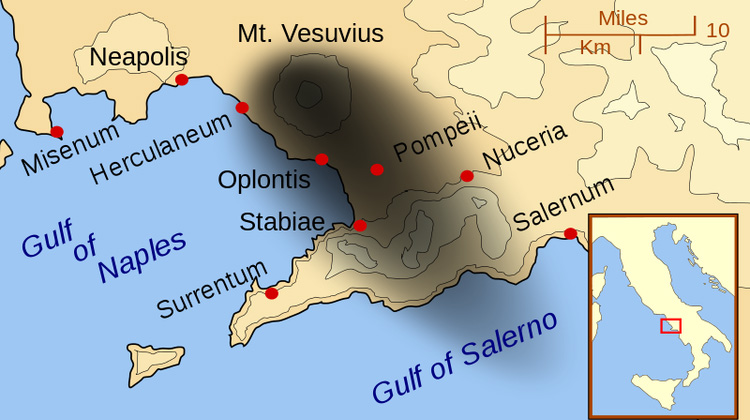
The AD 79 eruption material traveling southeast is not congruent with the June–August high-altitude wind directions that are toward the west. This mismatch tilts towards the hypothesis that the eruption occurred in the autumn period when high-altitude winds generally blow towards the southeast. New archaeological findings of volcanic material suggest Vesuvius erupted in the autumn instead of the summer.
This wind direction helped Herculaneum doge the majority of the ash and pumice caused by the first volcanic eruption. The sight of this apocalyptic scene unfolding over Pompeii was enough to convince the majority of Herculaneum’s citizens who wisely fled their city.
10. Most Pompeiians Actually Escaped The Eruption
While it’s unknown how many people actually passed away from the volcanic eruption, it is estimated that about 2,000 Pompeiians perished in the city, out of a population of between 10,000-20,000 inhabitants. While the overall number of casualties in Pompeii, Herculaneum, and the other villages in the surrounding region is about 16,000.
This is the reason perhaps why only a small number of bodies have been discovered buried in Pompeii in relation to the overall population of the city.
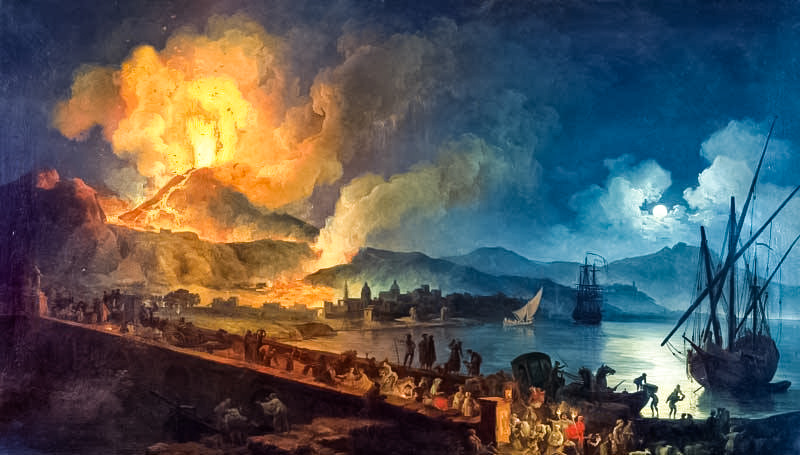
Most people managed to escape Vesuvius' savage wrath and resettled in other communities such as Naples, Capua, Cumae, Ostia, Paestum, Salerno, Puteoli, and others.
Archaeologist and historical Steven Tuck of Miami University undertook the endeavor to draw conclusions about who survived the volcanic eruption, and where they relocated to. Tuck created a method of research based on historical records which included documents, important family names, inscriptions, artifacts, infrastructures indicative of resettlement, and local culture that sprung up elsewhere after the volcanic eruption.
For example, one inscription on the tombstone of a man named Cornelius Fuscus who died on a military campaign in Dacia (modern-day Romania) stated that he was from the colony of Pompeii, then lived in Neapolis (Naples) before joining the army and stationed in Dacia as a praetorian prefect who led five legions in Domitian's war.
Another example is the Oscan word “HAVE” which means “farewell” inscribed in a late 1st Century AD tombstone in Naples. The word HAVE was recorded repeatedly in Pompeii in inscriptions and graffiti but was not common in Neapolis.
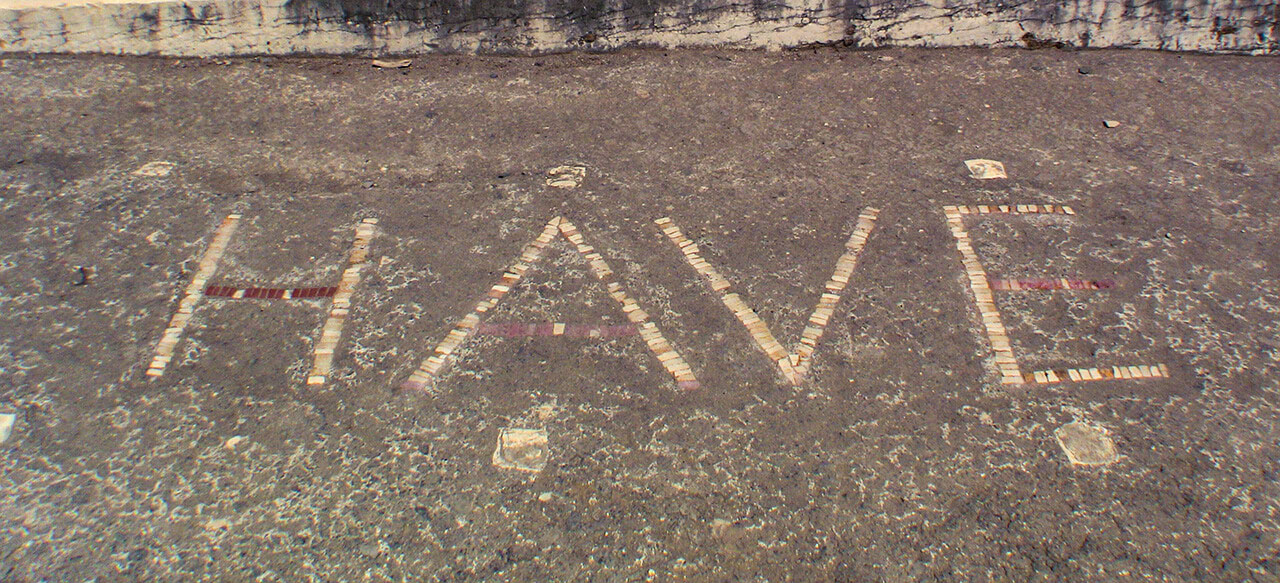
Historical documents detailed other prominent families such as the Sulpicius family resettled in Cumae. Emperor Titus is also known to have taken money from anyone who died in the eruption without an heir and granted it to cities that took in refugees to help with resettling infrastructure.
We may never know how many Pompeiians died and escaped, but continued research helps shed more light on the last days of Pompeii and its citizens.
This brings our travel blog 7 Surprising Things about Pompeii most people don’t know about to an end. Thank you for reading this page, and for choosing Stefano Rome Tours for your Pompeii tour from Rome along with visits to the spectacular Sorrento and Positano on the Amalfi Coast.
We look forward to seeing you in Italy!
